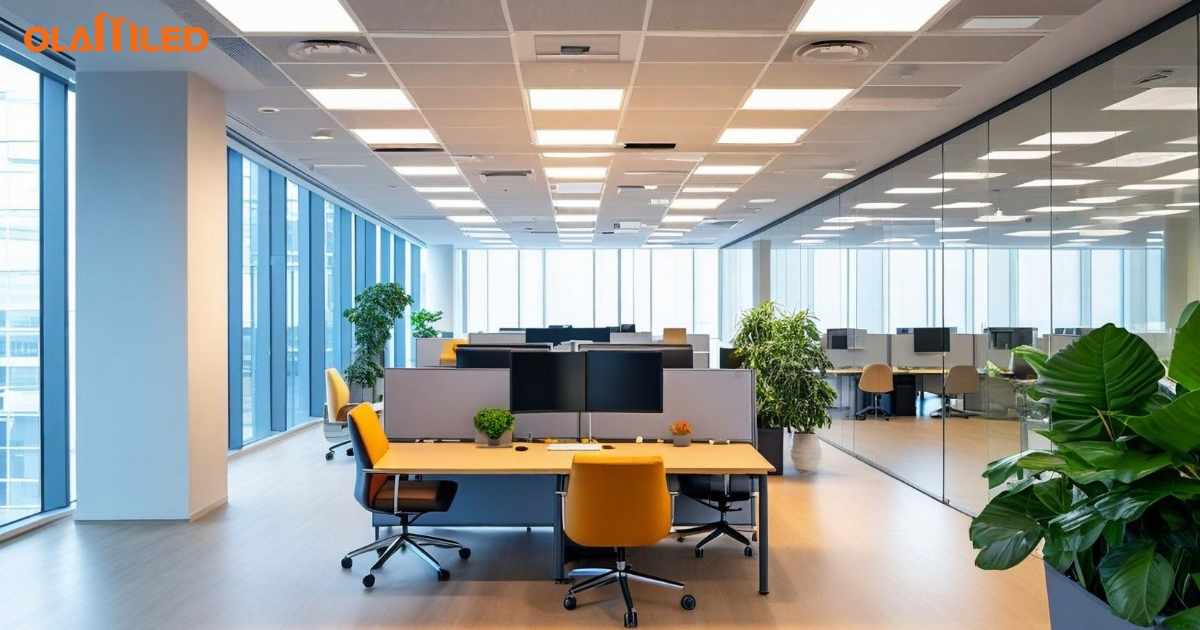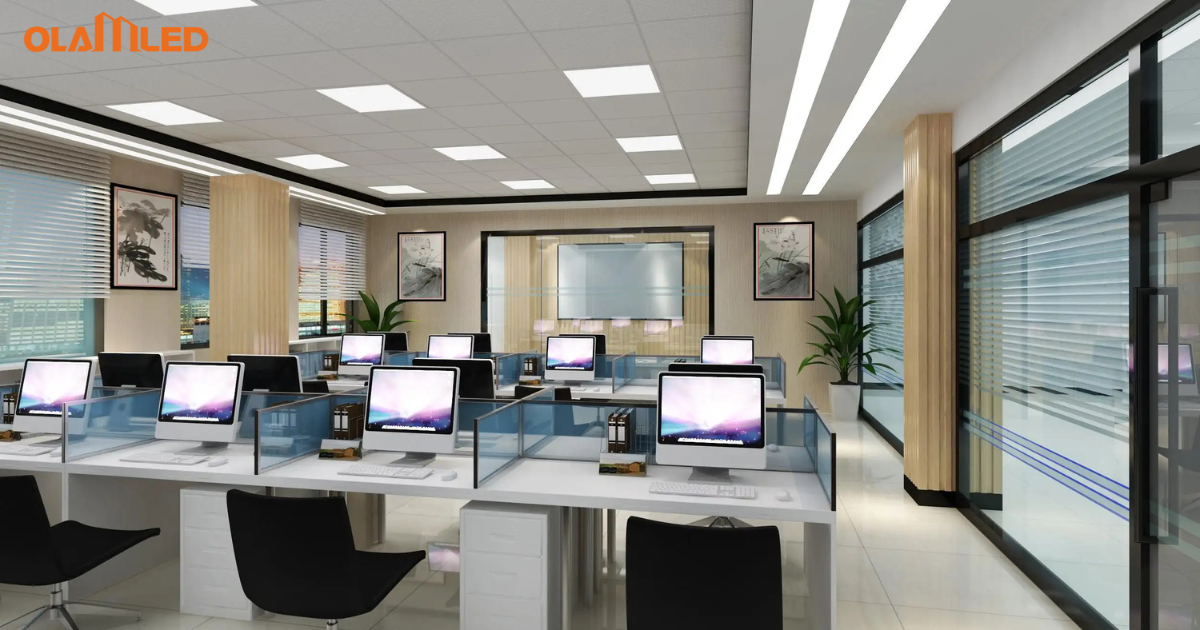What Are Low Glare LED Panel Lights?
Low glare panels use specialized diffusers and optics to soften light and reduce bright spots. They spread illumination evenly, easing eye strain in offices, schools, and homes.
Key Features:
- Quality diffusion materials
Polycarbonate or PMMA layers that break up bright points
- Optimized lens patterns
Micro‑lens arrays guide light uniformly
- Uniform light distribution
No visible LED “dots” under the surface
- Flicker-free drivers
Stable current keeps output constant
| Benefit | What It Means for You | Typical Result |
|---|---|---|
| Even illumination | Light covers work surfaces without hotspots | Fewer complaints about glare |
| Reduced eye strain | Softer light lowers fatigue | Up to 20% fewer reports of headaches¹ |
| Energy efficiency | High lumen output per watt | 10–30% lower power draw vs. fluorescents |
| Long lifespan | Durable LEDs and drivers | 40,000–50,000 hours before 80% output² |
| Verified safety | Meets Energy Star, UL or CE standards | Confidence in reliability and warranty |
Why Is Glare Control Important and How Is It Measured?
Excess glare can cut productivity by up to 15%, trigger headaches, and strain eyes over long work hours. Balancing brightness and comfort ensures clear vision with less fatigue.
How Does Glare Affect Visual Comfort and Aesthetics?
- Direct glare: From bright fixtures in the field of view
- Reflected glare: Off glossy desks, screens or glass
Effects:
- Up to 60% of employees report discomfort under strong glare
- Colors may look altered and spaces appear uneven
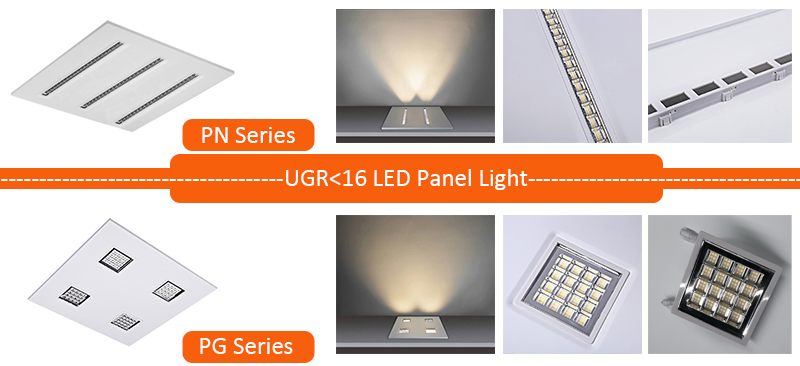
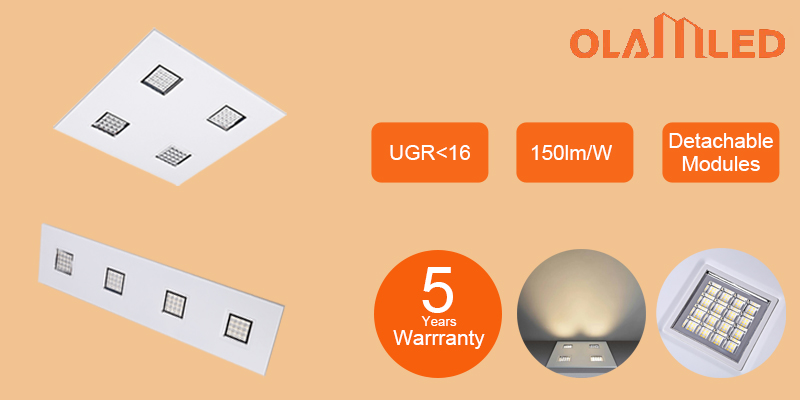
What Specifications Indicate Low Glare Performance?
| Specification | Ideal Value | Role |
|---|---|---|
| UGR | < 19 | Keeps light levels comfortable |
| lm/W | ≥ 80 | Ensures efficient use of light |
| CCT | 3000–4000 K | Warmer tones ease on the eyes |
| Beam angle | > 120° | Spreads light widely to reduce spots |
| Diffuser type | Textured or matte | Distributes light evenly |
| Driver | Flicker-free | Stops subtle flicker and strain |
What Are Common Measurement Methods?
- UGR calculation
- Disability Glare Index (DGI)
- Photometric testing
- User surveys
- Simulation tools (e.g., DIALux)

What Criteria Should You Consider When Selecting Low Glare LED Panel Lights?
When evaluating panels, focus on these factors:
Color Temperature (K)
- 2700–3000 K for living areas
- 3500–4100 K for mixed‑use spaces
- 5000–6500 K for task‑critical environments
Lumen-to-Watt Ratio
- Aim for ≥ 80 lm/W
- Higher values cut energy and heat
Beam Angle
- ≥ 120° standard for general lighting
- 140–160° for very wide coverage

Dimming Compatibility
- Confirm triac, 0–10 V or DALI support
- Look for 5–100% smooth range
Unified Glare Rating
- Under 19 for office or school use
- Under 16 for control rooms or critical tasks
Color Rendering Index (CRI)
- ≥ 90 for design studios or retail
- 80–85 sufficient for most offices
Mounting Options
- Recessed for clean ceilings
- Surface‑mount for retrofit
- Suspended for high ceilings

How Do Lumen Output and Wattage Impact Selection?
- Lumen output: Shows brightness level
- Wattage: Indicates power use
| Space Type | Recommended Output | Typical Wattage | Notes |
|---|---|---|---|
| Residential | 300–400 lm/panel | 5–8 W | Soft glow for living or dining areas |
| Office | 500–700 lm/panel | 8–12 W | Clear light for document or screen work |
| Classroom | 700–900 lm/panel | 10–15 W | Higher brightness for board visibility |
| Workshop/Lab | 900–1200 lm/panel | 12–18 W | Precision tasks demand more light |
What Is the Importance of Color Temperature in Design?
- Warm white (2700–3000 K): Cozier feel for living spaces
- Neutral white (3500–4100 K): Balanced tone for offices and kitchens
- Cool white (5000–6500 K): Clear task lighting
How Do Beam Angle and Distribution Affect Glare?
Narrow (< 60°):
- Spot‑lighting, higher contrast, risk of glare
Medium (60–120°):
- General use, moderate coverage
Wide (120–160°):
Even illumination, low contrast spots
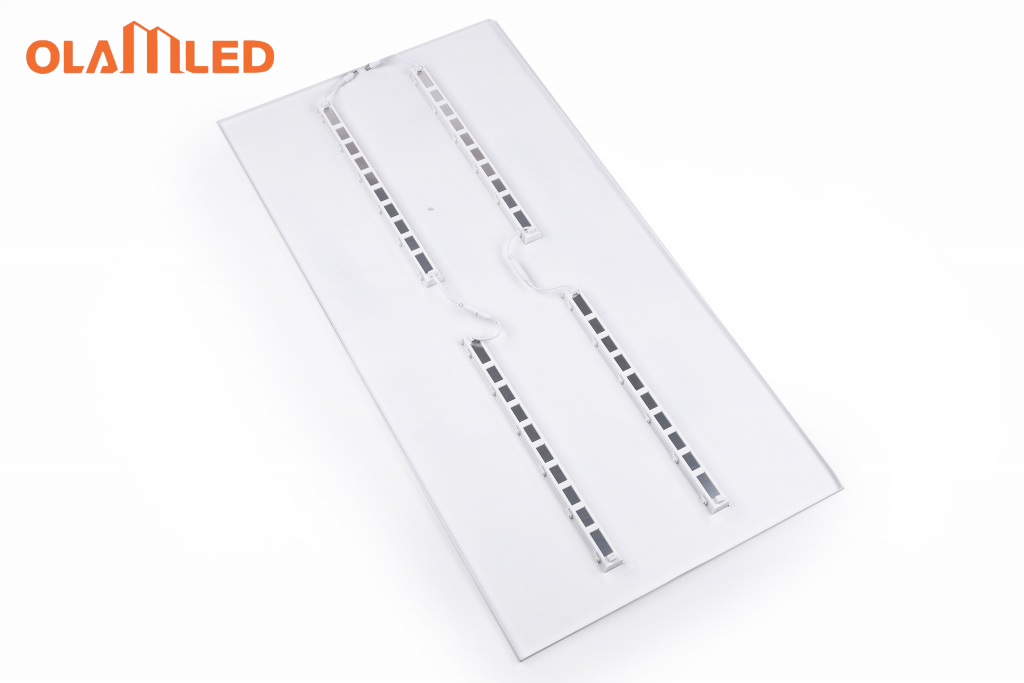
How Can You Evaluate Low Glare LED Panel Lights for Your Project?
- Luminance Rating:
Use a meter to check cd/m² at eye height
300–500 cd/m² for homes
500–800 cd/m² for offices
- CCT Review:Stick to 3000–4000 K
- CRI/LRI Checks:CRI ≥ 90
- Diffuser Design:Frosted or textured covers
- Dimming Range:Wide, steady control
- Certifications:Energy Star, RoHS, UL
- User Feedback:Read reviews on glare performance
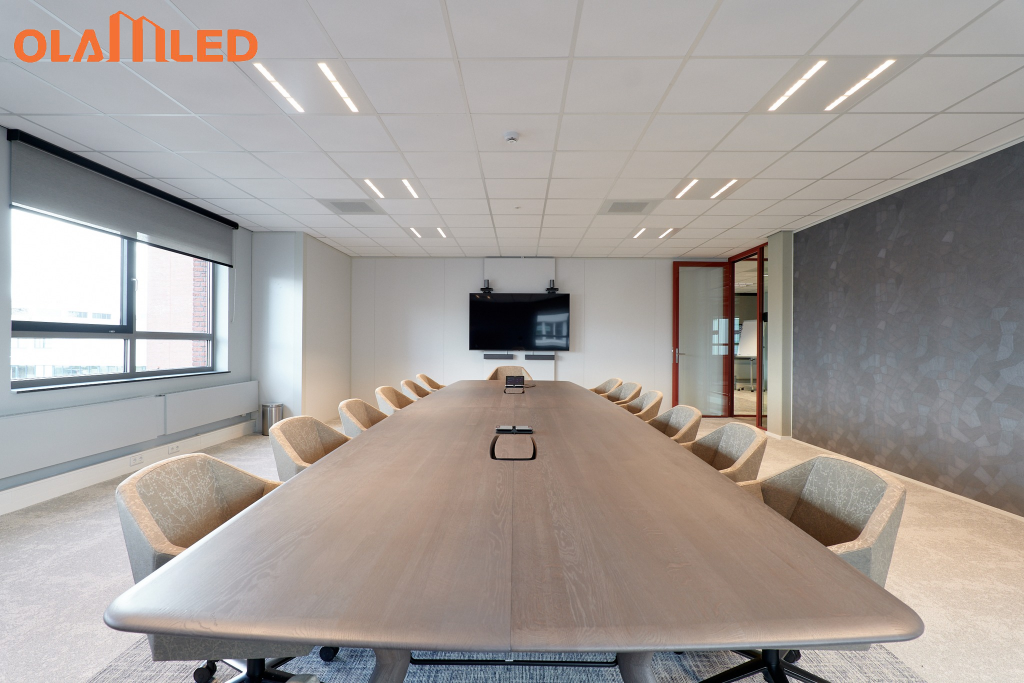
What Are Effective Testing Methods for Glare Assessment?
- Luminance meters measure cd/m² at fixture level
- UGR calculators combine room and panel data
- Occupation surveys rate perceived comfort on a 1–5 scale
- HDR imaging maps high‑contrast spots visually
- Software simulation in DIALux or Relux
How Can You Use Mockups to Assess Lighting Design?
| Mockup Type | Purpose | Benefits |
|---|---|---|
| Small‑scale model | Quick glare spot checks | Fast, low‑cost validation |
| Full‑scale panel | Real‑world light and shadow observation | Accurate user feedback |
| Digital renderings | Test layouts in CAD before ordering | Adjust placement without install |
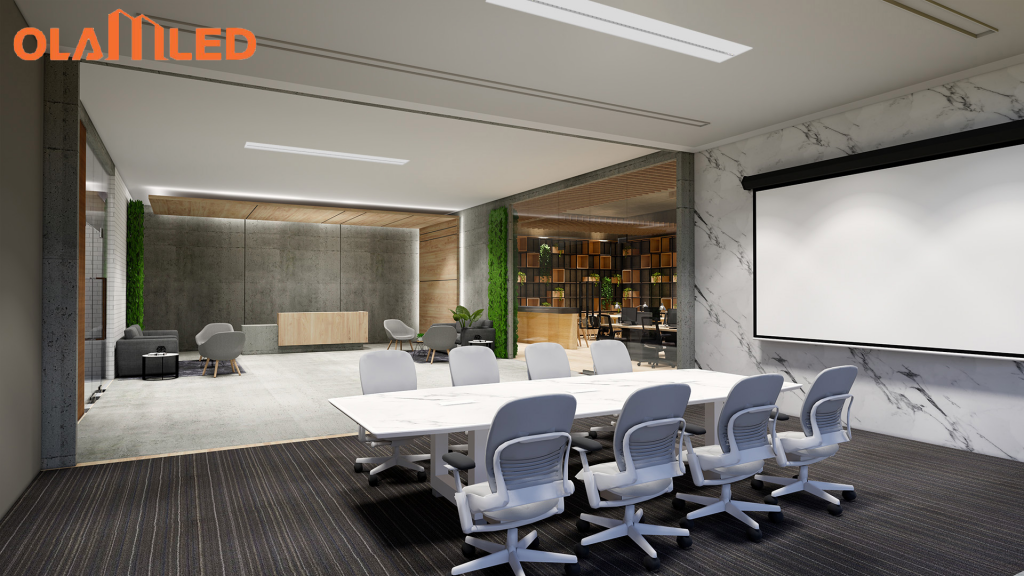
What Are Some Recommended Brands for Low Glare LED Panel Lights?
| Brand | Model/Series | Highlights |
|---|---|---|
| Philips | Hue White Ambiance Panel | Smooth dimming and brightness range |
| Cree | XLamp Panels | Uniform spread, flicker-free drivers |
| Havells | Arista Series | Textured diffusers for even light |
| Osram | Dulux LED Panels | Strong optics, user-preferred |
| Sylvania | Ultra LED Panels | High efficiency, gentle light |
| Eaton C-H | SureSeal Industrial Panels | UGR < 19, robust build |
Low Glare LED Panel Lights FAQs
Do LEDs glare more than fluorescents?
No. Proper diffusers can make LEDs softer than fluorescent tubes.
Does dimming increase glare?
Not with flicker-free drivers—light stays steady at all levels.
Are cooler temps less glaring?
Often, warmer whites (≤ 3000 K) feel gentler on the eyes.
Can these panels work outdoors?
Yes. Select IP65 or higher for weather protection.
How efficient are LEDs versus other sources?
LEDs use 30–50% less energy, last longer, and lower cooling costs.
What is the typical lifespan?
Between 15,000–50,000 hours, depending on quality and use.

